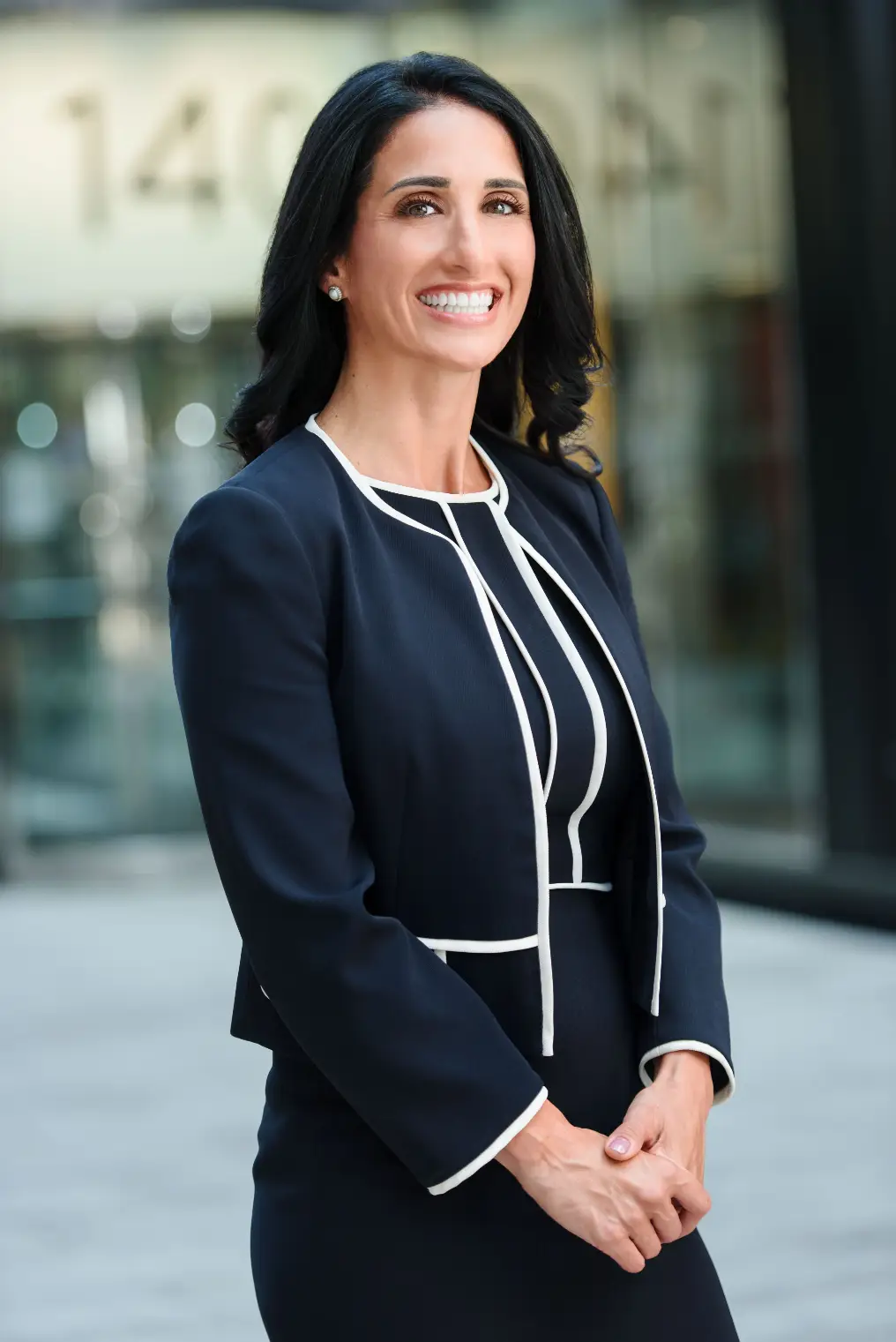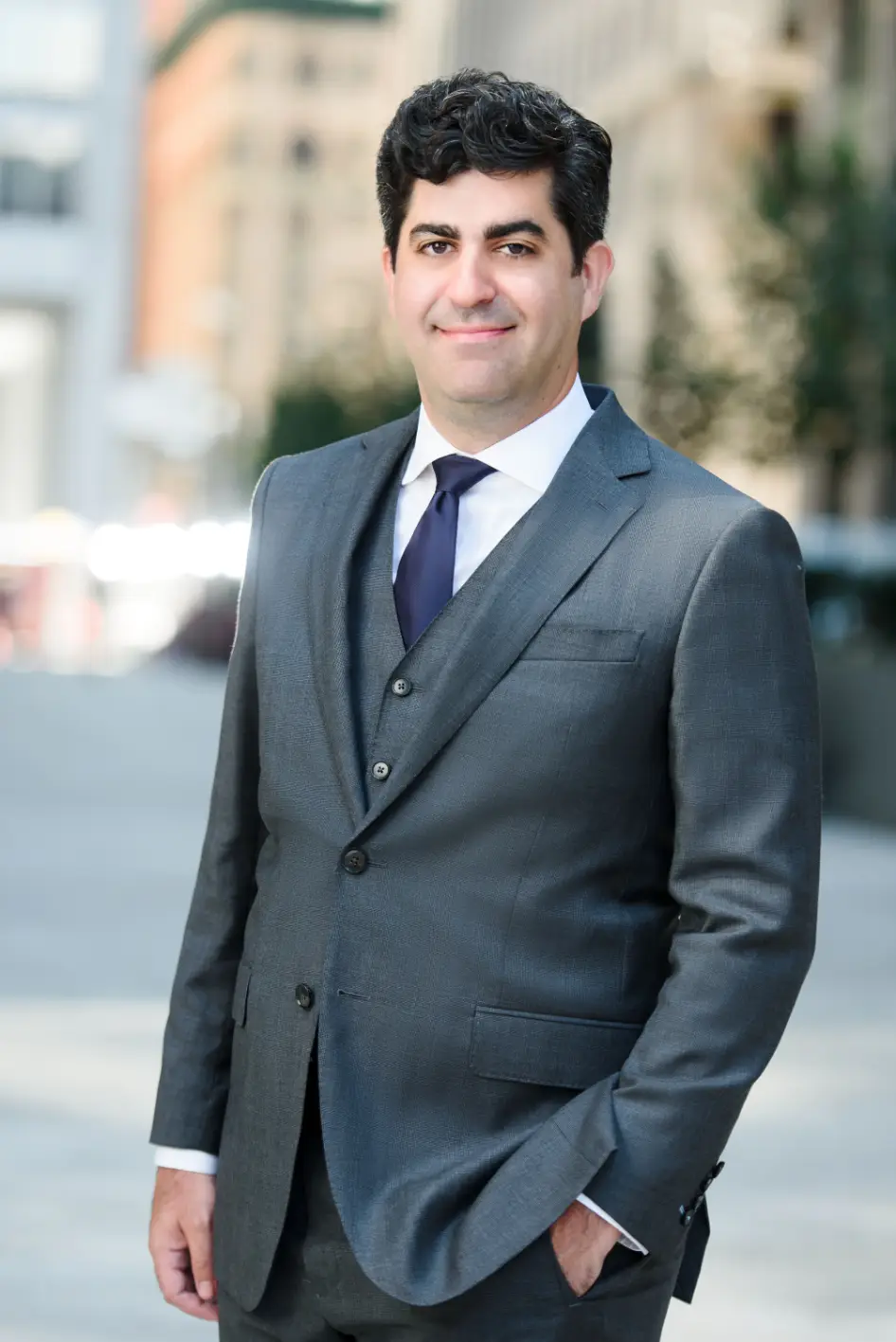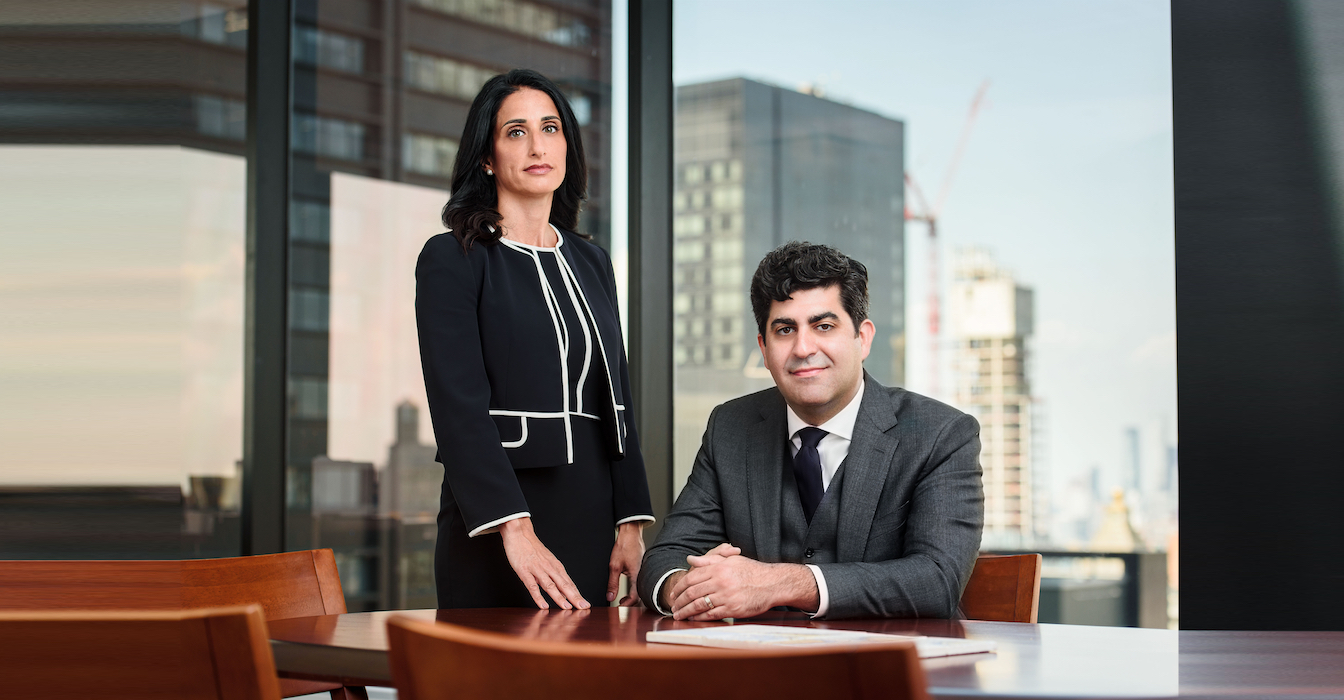Melissa Nafash and Jonathan Waisnor on Launching a Mass ADR Practice for Consumers at Labaton Sucharow
In March 2020, while the rest of us were huddled in our apartments pandemic-doom-scrolling, Melissa Nafash and Jonathan Waisnor were busy launching a new practice group at Labaton Sucharow.
Labaton is known for representing consumers and investors in class and direct actions, and has recovered over $18B for clients to date. Nafash and Waisnor were brought on to develop an Alternative Dispute Resolution (ADR) group, a practice area which has gained traction in response to corporations’ wide adoption of mandatory arbitration clauses in recent years.
Labaton's ADR department is focused on mass arbitrations for consumers, which doesn’t have a lot of precedent in the industry. The group represents consumers who have been injured by corporate wrongdoing but who can't bring their claims in court due to class waivers and the forced mandatory arbitration provisions in companies’ terms of service.
“For more than a decade, companies have enjoyed this get out of jail free card,” says Nafash. “We seek to level the playing field by providing a platform and a voice to consumers as we advocate on their behalf to bring their claims against these companies.”
Launching a new practice group is always going to be an exciting and challenging endeavor. For Nafash and Waisnor, who only met once in person before the launch, the pandemic was the least of it. The practice area of mass ADR is a relatively nascent one in the industry, so they were working without a lot of guideposts.
The work has paid off: While they cannot name particular wins because of the nature of the cases, it’s been a highly fruitful area for the firm. They’ve been able to resolve some cases where the clients received “several multitudes” of what they would have gotten had they joined the related class action, according to Waisnor. “That’s a really big win because it helps build loyalty and trust, and proves that you’re delivering above and beyond for these people who’ve given you their time, which is a precious resource for most people,” he says.
And the trajectory keeps pointing upwards: The group now represents over a quarter million people, and counting.
Lawdragon: Tell me about building out Labaton’s ADR practice. What did you have to do behind the scenes to get this working?
Jonathan Waisnor: Pretty much everything we did, we did from scratch. There really isn’t any precedent in an area like mass arbitration, so we didn’t have templates, or precedential documents, or even a lot of case law that would help us structure the department. We really needed to think through every issue.
First we had to define, what’s going to be our group culture? Because that mindset drives the entire project, start to finish. It’s a new practice area, and very technology heavy. So we decided to apply that “startup” mentality to it and make it very collaborative. When you start a new practice group, everyone says, “We need lawyers.” But we also needed some really good technology that was new and different. So found a lot of great professionals aside from lawyers, and we value the different perspectives of everyone in the group.
Then we had to develop methodology for picking our cases. The traditional class action development that firms often focus on wouldn’t work for the mass arbitration phenomenon. They’re different cases, and different things that go into that. We had so many opportunities, so we had to think through – what are we going to focus on? Those are the big projects that dominated our first year from when we started, in March 2020.
LD: Not an easy time to be starting anything!
JW: Yes, and we did it all remotely, which is sort of amazing when you look back at it.
LD: What about this practice area appeals to you both?
People want information on their rights and to assert their rights against companies, and they want an efficient and fast process to do that.
Melissa Nafash: There are a few things. One, I've always found it rewarding to litigate on behalf of many individuals – the larger the population that our work can benefit, the better. Second, I'm just appalled at the lengths companies have gone to avoid accountability and silence the very consumers that support their enterprise. Third, when I left a mass tort practice space at my prior firm, I knew it was filled with excellent and passionate advocates who would continue to pursue cases on behalf of people injured by a medical device or a pharmaceutical drug. When I joined Labaton, I knew of only one other law firm in this really important space. I thought, "Well, certainly this is an area that needs more lawyers with passion and guts." And those are two things I do not run short on. I felt that my work could really benefit consumers in this space.

JW: I came at it differently. I was a commercial litigator for a long time at a big firm here in New York. I was looking for something that was totally different, new and entrepreneurial. When I heard about this opportunity, I said, "Wow, that is something that nobody's doing." Frankly, a lot of lawyers probably don't think you can do this on any sort of large scale. That challenge appealed to me.
Also, there are not a ton of opportunities in law to be involved in a practice that is so dependent on technology, so connected to it. That really appealed to me too. We use technology as litigators, but usually as discreet, one-off projects. Here, we’re doing a lot of interesting, creative work with tech.
LD: And how about some of the challenges you faced? What did you have to overcome?
JW: There were a lot of unique challenges. The law is a naturally conservative profession, so undertaking a new area is always a challenge because there is no real blueprint. There was a firm doing mass employment arbitrations, but that’s very different from the consumer space. With consumers, you’re trying to get them interested in a mass arbitration campaign but they have a lot of demands on their time, and there’s often a lot of initial resistance. They think, is this really worth it for me? And there’s an educational component, too. How is this different than a class action?
So you have to overcome that and make sure you’re delivering your value proposition directly to people in a way they can understand and appreciate.
The technological challenges were considerable, too. You need significant infrastructure in place to do these cases at the scale we’re doing them. You can’t buy that technology off the shelf.
MN: Yes, our technology experts were absolutely key here. They needed to build something that enabled us to communicate with our clients and with the rest of the country at large about whatever wrongdoing we had uncovered. We not only need to reach people, but we need to continue to communicate with them. We gave them those marching instructions and they developed an excellent mode of communication for us, internally and externally.
LD: You mention a collaborative culture, with lawyers and non-lawyers alike. Why was that important to you?
JW: We knew we wanted to have a lot of people's input, because everybody brings different experiences and backgrounds. They may have an idea from their prior practice that could be helpful here in solving a problem. We also knew we needed to have the perspectives of a lot of non-lawyer professionals, with their input and views on how the technology is structured. In terms of how we operate on a day-to-day level, a lot of our cases are new products from big companies, so we're constantly getting ideas from our associates who are often of a different generation. They're seeing things that we aren't seeing. That collaborative mentality is something we definitely always thrive to push.
MN: Exactly. We also work a lot with firm management and other departments, legal and non-legal. It is a space that our firm really believes in, so they provide resources as we need them. We have a lot of support from the chairman of our firm, Chris Keller, the head of litigation, Jonathan Gardner, and the chief marketing and revenue officer, Janel Laughlin. We receive a lot of support from her and her team. We have several rockstar associates as well as a team of investigators that have proven to be crucial to our cases and our department. We have an amazing data team that manages the technology. We’ve also built an infrastructure of staff to handle the day-to-day client communications and case tasks. We can only do the great work that we're doing because we have hired really intelligent, hardworking people who give us the seamless support to work our cases.
LD: It sounds like lot of the practice involves communicating with consumers. What are your methods for reaching out to people about a new case?
Consumers care, they’re engaged, they want to hold companies responsible and make them accountable. It’s very rewarding to be a part of that, to be the voice for consumers to find the justice that they deserve.
MN: We reach consumers in several ways. We advertise on social media and search engines. We also have now built a base of clients over the past couple years that we communicate with about new cases. We’re also seeing current clients of ours talking to other consumers who may have been injured by the same wrongdoing and telling them about the cases. As you can probably imagine, word of mouth moves very quickly on the internet!
LD: What sorts of cases do you generally focus on?

JW: We’re broadly in two areas. We have a huge presence in data privacy. That’s a very interesting area to people, they’re very concerned about how companies are handling and sharing their data. We’re also doing a lot of work in financial services. People are often confused with the products that those companies are offering, and frankly they often aren't great for consumers. People are often very frustrated at how banks and companies are handling their money. Especially some of these newer FinTech companies that want to move fast and break things, that's a dangerous game when you're handling people's money.
LD: You’re both coming at this practice from really different backgrounds. How would you each say your prior work has prepared you for this role? And what did you have to learn?
MN: Prior to joining Labaton, for approximately 13 years I sued pharmaceutical and medical device manufacturers for defective products. The injuries were physical in nature, and the clients we represented were fewer than the thousands that we represent now, but there are undeniable similarities between the two spaces. Perhaps the ones that ring most true is having to anticipate client needs and knowing how to communicate both at an individual level and mass level with the clients.
I truly enjoy talking with the clients. With 250,000 clients, I can no longer speak to every single one of them individually, but I do enjoy listening to their stories. Many have my personal cell phone number, a habit from my old practice.
With respect to what I had to learn, perhaps the most daunting was new areas of law. In my mass tort space, I was very comfortable with the process, the case law and the medicine, which I really enjoyed. This practice provided all new areas of law, including process, case law and statutes. But that also made it really exciting. I immersed myself in the data privacy space. I really enjoy it and find it just as rewarding as my prior practice.
JW: I came from a big firm background. I was a clerk for two years out of law school, and then I went to Willkie Farr, where I had a lot of exposure to securities, commercial litigation and bankruptcy.
As a mid-level associate, I got an opportunity to work on a big bankruptcy case, the Lehman Brothers RMBS litigation. Basically what they were trying to do is figure out a way to do a trial about all of the different hundreds of RMBS trusts and loans that Lehman had done prior to bankruptcy. It was an amazingly fast trial experience where we had to handle and process a lot of data and figure out how to present it to the court in the summary fashion. And it was socially impactful, because it was really about the financial crisis and getting down into the individual data files. I really loved that, so I started developing that as a specialization.
When this opportunity at Labaton came along I thought, well, this is a perfect fit. Because that's what a lot of this is – you're going out, getting data from people, figuring out how to organize it, and package it in a very fast-moving, creative litigation environment. So while it was a new and challenging undertaking, I knew this was doable when we started because I'd seen and done it before in that bankruptcy context.
What I needed to learn was the client aspect. Unlike in my prior cases with large corporate clients, here you have to convince people, first of all, to give you the right to represent them. You're asking these people to sign an agreement with you to be their lawyer.
Especially with some of these newer FinTech companies that want to move fast and break things, that's a dangerous game when you're handling people's money.
Melissa has been a great compliment to my background when it comes to the client relationships. We also had the marketing and technology people behind us, and we've worked hard internally to develop a good system, so I wasn’t out there trying to figure it out on my own.
LD: What has the reaction been from companies to the work you’re doing?
MN: They definitely resist it. Previously, when companies were sued they would simply move to compel arbitration before the federal court. That would be granted and they would go on to enjoy their liability-free life. When this practice of mass ADR emerged, they could no longer do that. Now we are seeing companies preferring to resolve class cases to get a class release. Since, with arbitration, even if they resolve an arbitration that’s just a release from one (or a few) individual claim, and the exposure of the potential thousands or more of additional claims remains. Companies are still in the process of figuring out how to best fight the various avenues of traffic coming at them.
JW: Yes, the traditional corporate line on arbitration was that it was faster and more efficient than class actions. But now that a lot of people want to do arbitration, it’s not as attractive to companies. They don’t really want people to be able to move through the system efficiently, so they’re changing their arbitration provisions to make them more burdensome for people. Fortunately, courts have not been too sympathetic with these companies. Companies now have to sit down and say, do we want to make this work with our customers, or do we just want to have that old liability shield?
LD: And it sounds like more people are becoming more educated and engaged in their own recourse here.
MN: That’s right. Public support is really strong. We as lawyers can be as passionate as we want about holding companies responsible, but we cannot accomplish that without the consumers and the support of the public.
JW: People want information on their rights and to assert their rights against companies, and they want an efficient and fast process to do that.
MN: Consumers care, they’re engaged, they want to hold companies responsible and make them accountable. It’s very rewarding to be a part of that, to be the voice for consumers to find the justice that they deserve.


